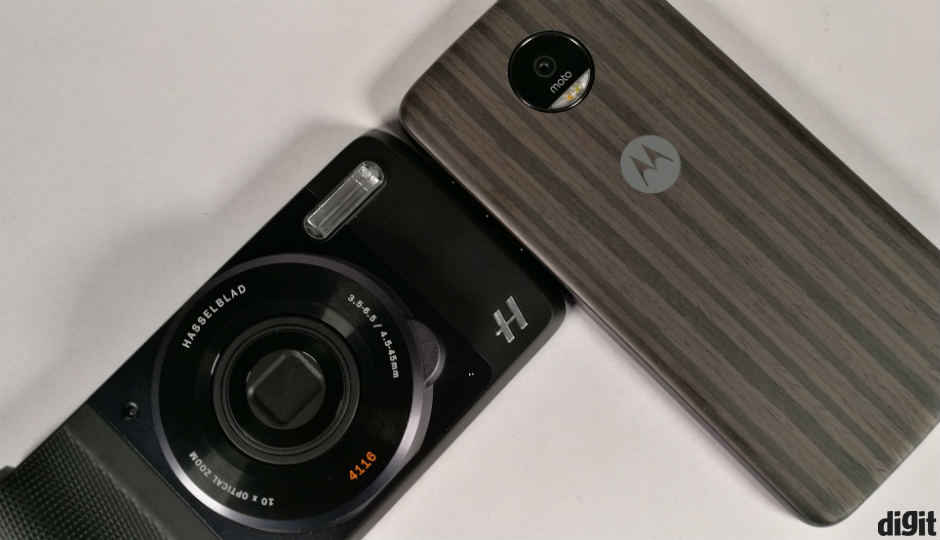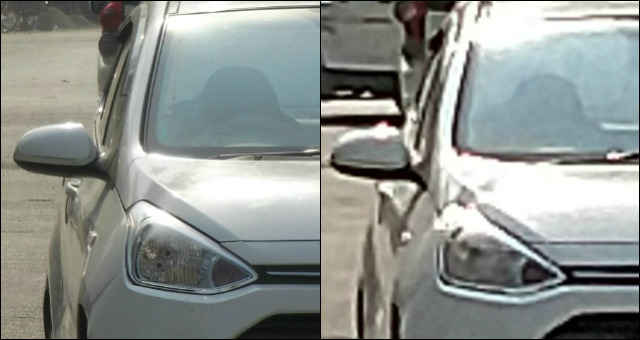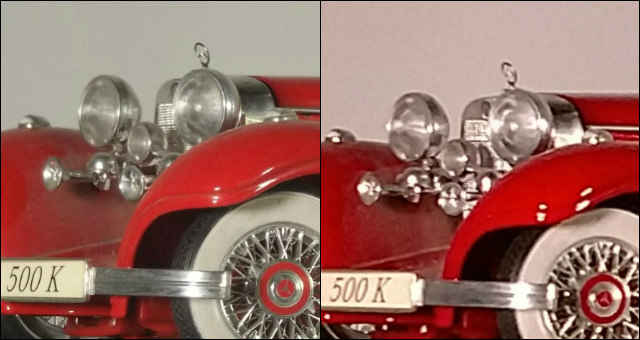Comparison: Moto Z camera v. Hasselblad True Zoom Moto Mod
When Hasselblad makes a camera, you sit up and take note. But, how big an upgrade will it provide over the Moto Z's default camera? Here's what we found.

When Hasselblad introduced the Moto Mods at IFA 2016, we were all quite excited at the prospect of seeing a Hasselblad in action on a smartphone. Right after the India launch, we got our hands on the Hasselblad True Zoom, an external back plate containing a dedicated image sensor, a 10x optical zoom lens, AF assist light, Xenon flash and the famed orange shutter of Hasselblad.
 Survey
SurveyOn paper, the True Zoom is aimed at bringing extensive optical zoom to the smartphone camera. The dedicated sensor inside overrides the Moto Z's own image sensor, when you snap on the back cover. It is built quite well, and the added grip helps you to maneuver the camera with one hand. Notably, the Moto Z and the Hasselblad True Zoom combined is quite heavy, so one-handed shooting becomes rather unwieldy. The Moto Z does not include image stabilisation, which makes the implementation of 10x optical zoom somewhat difficult here. It is also priced at Rs. 19,990, so anyone opting for it would have certain expectations out of it. How does it fare, in comparison to Moto Z's default camera? Will it really enhance your photography abilities from a smartphone? Here's what we found out.
Note: The image samples used in the comparison are 100% crops of the original photographs. Please check the galleries below for full resolution photographs of the two cameras. Image to the left is shot by the Hasselblad True Zoom Moto Mod, image to the right shot by the Moto Z.
Daylight and Indoors at default focal length
Our initial tests began with daylight shots from default focal lengths, without zooming in. The True Zoom mod takes somewhat longer than the Moto Z to focus on objects, which makes it a tad irritating if you are trying to shoot a photograph promptly. Mods also consume a significant amount of battery, so you need to keep an eye on the battery levels, before using the Moto Mods. Both the cameras use the same app, with the True Zoom mod adding Hasselblad's custom engineered colour modes to the camera app. It retains the varying modes that give you control over your photographs. Keeping all of these in mind, here's what we found:
The Hasselblad True Zoom, along with taking noticeably longer to focus than the Moto Z itself, also overexposes the frame under bright, direct sunlight. Photographs shot by it look really bright, but also look a tad bleak. This is primarily due to the low contrast levels, which also make colours look a bit spiked in terms of saturation levels. As for the Moto Z, while it has comparably lower dynamic range and may even render slightly more amount of image noise than the Hasselblad True Zoom, the colours here look more natural and balanced. It also does better with balancing the incident light and the colours.
In closer street shots, the Hasselblad True Zoom Moto Mod looks better with the overall distribution of brightness, higher dynamic range and lesser noise. Image sharpness is similar in both, although the consistent saturation and contrast levels on the Moto Z decidedly make photographs look sharper. The Hasselblad True Zoom may produce brighter, more likeable photographs, but the Moto Z is the sharper, more balanced shooter here.
Under diffused sunlight, the over-exposing nature of the True Zoom disrupts the white balance, which yet again makes images look bleak. The Moto Z, although spiking the contrast to slightly higher than what would be optimum, makes photographs look more intense and crisp. Despite the slightly better dynamic range performance of the Hasselblad True Zoom Moto Mod, the Moto Z's default camera obtains the better photograph under changing light conditions.
In indoor conditions under direct fluorescent light, the Hasselblad True Zoom ends up lacking in terms of sharpness, contrast and originality of the skin tone. As you would see from the sample above, the True Zoom overexposes, and in turn, somewhat bleaches the photograph. The Moto Z, meanwhile, produces too sharp contrast levels, and may even end up sacrificing on some details. It, though, produces the sharper photograph of the two.
Low light at default focal length
Under low light, the Moto Z is clearly the better performer. It lights the frame better, fares better with colours, and although there is ample noise, it manages to fix focus faster than the Hasselblad True Zoom, which quite frankly is a surprise. The Hasselblad True Zoom lacks colours, sharpness and light here.
Optical Zoom v. Digital Zoom
Optical zoom is what the True Zoom has been made for, and optical zoom is where it will beat every smartphone in this world. Simply put, the Hasselblad True Zoom does not cut into the area of an already small sensor when zooming in on a subject, hence producing the same level of sharpness that it generally produces at default focal length. There certainly are better mobile cameras than the Hasselblad Moto Mod in terms of image quality without zooming in, but after 10x optical zoom, this is the very best of the mobile lot.
We have already spoken about the quality of photographs under bright daylight, and while the quality remains same, the zoom looks particularly good, when you consider the quality of digital zoom produced.
The Hasselblad True Zoom avoids pixelation by shooting at its max resolution, while in digital zoom, details are certainly compromised.
Noise levels, though, are more visible when you zoom in on a subject. The photographs above are of 3x optical and digital zoom, respectively, and although the True Zoom produces distinctly sharper photographs, we would have hoped for better colour quality, sharpness and detail. The focus mechanism also does not work properly, and it is easier and more accurate to focus with a Moto Z. The True Zoom fails to lock on to a subject after repeated attempts, even in well-lit environments. Switching to the manual mode fixes this, but it is certainly an inconvenience.
The photograph above was shot at 7.2x optical and digital zoom, respectively. Notably, the True Zoom Moto Mod possibly uses a rather basic, 1/2.3-inch type image sensor, along with an f/3.5-6.5 telephoto lens and a slower image processor. The photography quality you get from the Moto Z is typically that of a smartphone, with algorithms attempting to balance the colours and sharpness. The True Zoom, meanwhile, delivers you results without much altering in terms of the algorithm.
Despite the softness, using 5x optical zoom to capture these expressions was something that the Moto Z visibly fails at. The True Zoom is meant for optical zoom, and it does well on these terms. The True Zoom would also require image stabilisation to make optical zoom work well, and it is difficult to fix your focus on a subject without it.
What we think
The Hasselblad True Zoom Moto Mod is a great first attempt at enhancing smartphone cameras. The idea is in place, and all we would need to do is wait for the second generation of it to come with a better quality sensor, better lens, image stabilisation and a faster image processor, and the Hasselblad True Zoom will be a great way to enhance smartphone photography. The Moto Z does fairly well, although we still like the colours of the True Zoom. This is not the final product, but a first attempt at producing a distinct upgrade to the smartphone camera. It is also very easy to use, with the snap-on pattern of the mod.
As of now, you should spend Rs. 20,000 here only if you want optical zoom and the brand of Hasselblad at the back of your phone. It still shoots decent photographs, so you would not lose much, but we expect a much better output from future versions of Moto's camera modules.
Buy Moto Z play at Rs. 24999 on Flipkart
Buy Moto Z at Rs. 39999 on Flipkart









